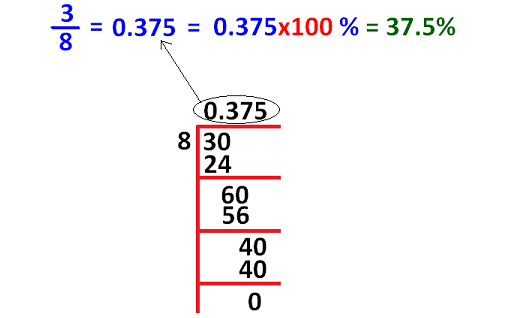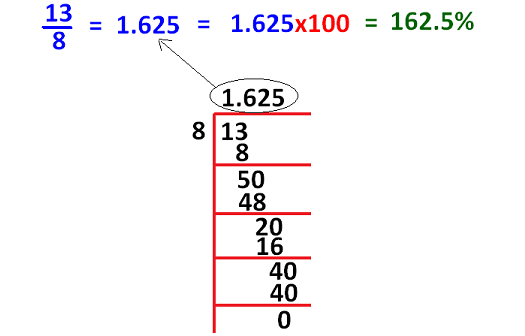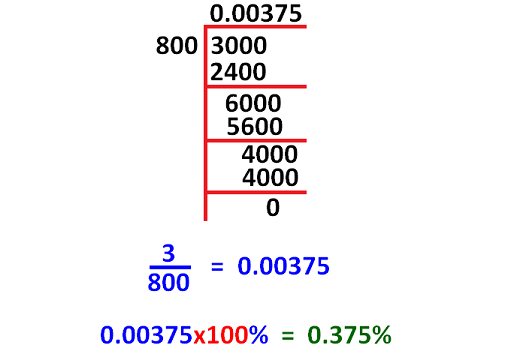PERCENTS GREATER THAN 100 AND LESS THAN 1 WORKSHEET
Problem 1 :
Classify the fraction 17 / 5 as
(A) less than 1 %
(B) greater than 100%
(C) between 1% and 100%
Problem 2 :
Classify the fraction 7 / 25 as
(A) less than 1 %
(B) greater than 100%
(C) between 1% and 100%
Problem 3 :
Classify the fraction 3 / 8 as
(A) less than 1 %
(B) greater than 100%
(C) between 1% and 100%
Problem 4 :
Classify the fraction 13 / 8 as
(A) less than 1 %
(B) greater than 100%
(C) between 1% and 100%
Problem 5 :
Classify the fraction 3 / 800 as
(A) less than 1 %
(B) greater than 100%
(C) between 1% and 100%
Problem 6 :
Classify the decimal 2.742 as
(A) less than 1 %
(B) greater than 100%
(C) between 1% and 100%
Problem 7 :
Classify the decimal 0.2742 as
(A) less than 1 %
(B) greater than 100%
(C) between 1% and 100%
Problem 8 :
Classify the decimal 0.0032 as
(A) less than 1 %
(B) greater than 100%
(C) between 1% and 100%
Problem 9 :
Classify the decimal 0.032 as
(A) less than 1 %
(B) greater than 100%
(C) between 1% and 100%
Problem 10 :
Classify the decimal 0.32 as
(A) less than 1 %
(B) greater than 100%
(C) between 1% and 100%

Detailed Answer Key
Problem 1 :
Classify the fraction 17 / 5 as
(A) less than 1 %
(B) greater than 100%
(C) between 1% and 100%
Solution :
In the fraction 17 / 5, the numerator is greater than denominator.
So the fraction 17 / 5 is greater than 100%.
More clearly,

In the above calculation, the fraction 17 / 5 is equal to 340% which is greater than 100%.
Problem 2 :
Classify the fraction 7 / 25 as
(A) less than 1 %
(B) greater than 100%
(C) between 1% and 100%
Solution :
In the fraction 7 / 25, the numerator is less than denominator.
From the above point, all we can conclude is, the fraction 7 / 25 is not greater than 100%.
It may be either between 1% and 100% or less than 1%.
To make sure of the category, let us convert the given fraction into percent as given below.

In the above calculation, the fraction 7 / 25 is equal to 28% which is between 1% and 100%.
Problem 3 :
Classify the fraction 3 / 8 as
(A) less than 1 %
(B) greater than 100%
(C) between 1% and 100%
Solution :
In the fraction 3 / 8, the numerator is less than denominator.
From the above point, all we can conclude is, the fraction 3 / 8 is not greater than 100%.
It may be either between 1% and 100% or less than 1%.
To make sure of the category, let us convert the given fraction into percent as given below.

In the above calculation, the fraction 3 / 8 is equal to 37.5% which is between 1% and 100%.
Problem 4 :
Classify the fraction 13 / 8 as
(A) less than 1 %
(B) greater than 100%
(C) between 1% and 100%
Solution :
In the fraction 13 / 8, the numerator is greater than denominator.
So the fraction 13 / 8 is greater than 100%.
More clearly,

In the above calculation, the fraction 13 / 8 is equal to 162.5% which is between 1% and 100%.
Problem 5 :
Classify the fraction 3 / 800 as
(A) less than 1 %
(B) greater than 100%
(C) between 1% and 100%
Solution :
In the fraction 3 / 800, the numerator is less than denominator.
From the above point, all we can conclude is, the fraction 3 / 800 is greater than 100%.
It may be either between 1% and 100% or less than 1%.
To make sure of the category, let us convert the given fraction into percent as given below.

In the above calculation, the fraction 3 / 800 is equal to 0.375% which is less than 100%.
Problem 6 :
Classify the decimal 2.742 as
(A) less than 1 %
(B) greater than 100%
(C) between 1% and 100%
Solution :
The value of the given decimal is greater than 1.
So, it is greater than 100%
More clearly,

In the above calculation, the decimal 2.742 is equal to 274.2% which is greater than 100%.
Problem 7 :
Classify the decimal 0.2742 as
(A) less than 1 %
(B) greater than 100%
(C) between 1% and 100%
Solution :
The value of the given decimal is less than 1.
It may be either between 1% and 100% or less than 1%.
To make sure of the category, let us convert the given decimal into percent as given below.

In the above calculation, the decimal 0.2742 is equal to 27.42% which is between 1% and 100%.
Problem 8 :
Classify the decimal 0.0032 as
(A) less than 1 %
(B) greater than 100%
(C) between 1% and 100%
Solution :
The value of the given decimal is less than 1.
It may be either between 1% and 100% or less than 1%.
To make sure of the category, let us convert the given decimal into percent as given below.

In the above calculation, the decimal 0.0032 is equal to 0.32% which is less than 1%.
Problem 9 :
Classify the decimal 0.032 as
(A) less than 1 %
(B) greater than 100%
(C) between 1% and 100%
Solution :
The value of the given decimal is less than 1.
It may be either between 1% and 100% or less than 1%.
To make sure of the category, let us convert the given decimal into percent as given below.

In the above calculation, the decimal 0.0.032 is equal to 3.2% which is between 1% and 100%.
Problem 10 :
Classify the decimal 0.32 as
(A) less than 1 %
(B) greater than 100%
(C) between 1% and 100%
Solution :
The value of the given decimal is less than 1.
It may be either between 1% and 100% or less than 1%.
To make sure of the category, let us convert the given decimal into percent as given below.

In the above calculation, the decimal 0.0.32 is equal to 32% which is between 1% and 100%.

Apart from the stuff given above, if you need any other stuff in math, please use our google custom search here.
Kindly mail your feedback to v4formath@gmail.com
We always appreciate your feedback.
©All rights reserved. onlinemath4all.com
Recent Articles
-
Multi Step Algebra Word Problems
Apr 23, 24 09:10 PM
Multi Step Algebra Word Problems -
Solving Multi Step Word Problems Worksheet
Apr 23, 24 12:32 PM
Solving Multi Step Word Problems Worksheet -
Solving Multi Step Word Problems
Apr 23, 24 12:07 PM
Solving Multi Step Word Problems